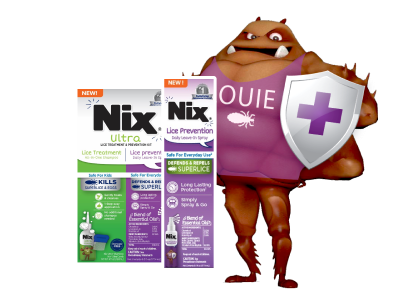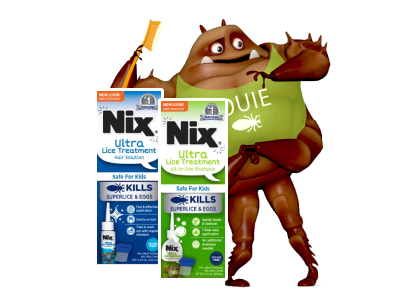
7 Ways to Protect Your Family When One Kid Brings Home Lice
When one child in your family has lice, how do you keep the lice from spreading to other family members? First, it’s important to know how head lice spread from person to person.
How Head Lice Spread
Lice cannot fly and they do not jump. Lice only spread when they’re able to transfer—by falling or crawling—from one person’s head to another person’s head. This can happen if two people are close together or if lice transfer to an item that will quickly come in contact with another person’s head.
For example, if one child in the family has lice, they may unknowingly pass lice to a sibling, parent, or friend while hanging out on each other’s beds, or sitting next to each other on the couch or in the car.
It is possible, however, to prevent the spread of lice in your family and even to yourself.
Tips to Prevent Other Family Members from Getting Lice
1. Check everyone’s head for lice.
One of the first things to do after finding out one member of the family has lice is to check everyone else as well, including yourself. See our step-by-step instructions and video on how to check for lice so you know what to look for.
2. Wash or disinfect everything that could have lice on it.
Lice can only live off of the head for 1 to 2 days but it is still important to take the necessary steps to ensure you have removed lice from your home to prevent reinfestation. First, determine everything the affected child has worn, sat on, or had close contact with since they most likely became infested. Wash clothes, bedding, pillows, and stuffed animals using the hot water cycle on your washer (130°F) and then dry on the high heat cycle for at least 20 minutes. Take any items that cannot be washed to the dry cleaner or seal them in a plastic bag for two weeks to ensure the lice are dead. For cushioned or upholstered furniture you can use Nix Lice Killing Spray. You can easily kill lice by spraying it on most sofas, cushioned chairs, mattresses, carpets and even car interiors. Just let the sprayed surfaces dry completely before allowing any people or pets to sit on them.
3. No head-to-head contact does not mean no hugs.
Limiting contact with others during a lice outbreak is hard, especially since children can struggle emotionally with the fact that they have lice. But reassure them that lice has nothing to do with cleanliness or personality. They did nothing wrong. Find some other ways to show your child affection while they have lice. Have a strict rule in your house that no one gets close enough for lice to be able to crawl or fall on someone else’s head or body, but we can all still be together. The treated child should be clear of lice and lice eggs (nits) after 7 days, so if you do a recheck at this time and all is clear, you can relax the rules. If lice are still present after 7 days, another round of treatment is needed.
4. Have everyone else in the family use a lice prevention spray.
Being a family and not being in close contact can be tough, especially with kids. That’s why it is important to be proactive and help prevent lice outbreaks in your family. With Nix® Lice Prevention Daily Leave-In Spray, you have more peace of mind since it defends against and repels lice and superlice with a blend of essential oils. It is also easy to apply. It can be sprayed onto damp or dry hair and can be used one or two times daily. A bonus is it even conditions and detangles hair.
5. Encourage your kids NOT to share.
Sharing is part of life. In fact, you probably spent your child’s toddler years teaching them how to share. But when lice affects one child, the sharing needs to stop until lice have been removed and not seen for at least 7 days. When one child has lice (or there’s a lice outbreak in your community), no one in the house should be sharing combs, brushes, hats, hairbands, headphones, clothes, towels, blankets or pillows. No sharing of sports equipment either, particularly anything that goes on or over the head. And no hanging out on each other’s beds.
6. Do regular head checks on all family members.
With lice, an itchy head isn’t always the first symptom, so you may not know right away if another family member has lice. Doing regular head checks (at least every 2 or 3 days) on every family member for a week or until lice are completely gone is a good idea.
7. Make sure everyone in your family is aware of these lice prevention practices.
Let everyone in the family know you are in this together and share these preventive practices with them. It can be hard to follow all these tips and it can be frustrating for everyone to have lice in the house. But, the truth is, lice can infest anyone, so it’s not something to be ashamed of or blamed for, even if someone shared a brush or a hat. And if all goes well, the lice should be gone within a week of treatment if properly treated.
Keeping Nix products on hand is always a good idea, especially during school, sports, and camp seasons. For example, having a treatment and preventative product on hand is great for when your child’s friend or teammate suddenly has lice.
You can learn more about preventing lice, treating lice, and our products on our Frequently Asked Questions page.



